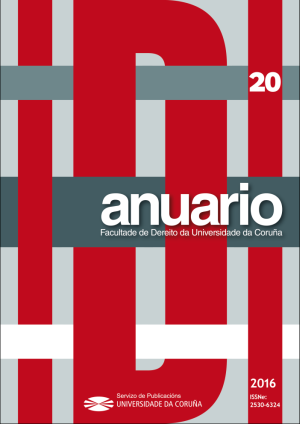An approach to the United States system of geographical indications protection
Main Article Content
Abstract
In this article, the aim is to present the legal framework of geographical indications in the United States in order to highlight its differences with the current European system. To do so, we start with the international regulations in which both systems are involved: the Agreement on Trade-Related Aspects of Intellectual Property Rights, which serves as the key to the coexistence of the two systems—the sui generis system advocated by the European Union and the trademark system defended by the United States of America. The differences between the two are numerous, and far from bridging the gap, it seems that the tendency is far from being directed towards reaching an agreement, which undoubtedly would result in benefits for consumers on both sides of the Atlantic.
Keywords:
Downloads
Article Details
References
BABCOCK, Bruce; CLEMENS, Roxanne: «Geographical Indications and Property Rights: Protecting Value-Added Agricultural Products», MATRIC, 2004.
BOTANA AGRA, Manuel José, Las Denominaciones de Origen, Marcial Pons, Madrid, 2001.
CEBALLOS MOLANO, Raquel; GARCÍA VELASCO, Isabel Cristina, «Protección legal de las denominaciones de origen y las marcas frente a los TLC suscritos por Colombia», Prolegómenos. Derechos y valores, 16, 2013, págs. 175-189.
ECHOLS, Marsha, «Geographical Indications for Foods, Trips and the Doha Development Agenda», Journal of African Law, 47, 2003, págs. 199-220.
ERRÁZURIZ TORTORELLI, Cristina, «Indicaciones Geográficas y Denominaciones de Origen: Propiedad Intelectual en Progreso», Revista Chilena de Derecho, 37, 2010, págs. 207-239.
FRIEDMAN, Lawrence, A History of American Law. New York. Simon and Schuster, 1985.
GEOGRAPHICAL INDICATIONS (GIs) in U.S. Food and Agricultural Trade, Washington D.C., Congressional Research Service, 2017.
LLAIN ARENILLA, Shirley, «Las indicaciones geográficas en el Tratado de libre comercio Colombia-Estados Unidos: la armonización de políticas internacionales de la OMC a los TLC», Boletín Mexicano de Derecho Comparado, 150, 2017, págs. 1179-1214.
O’CONNOR, Bernard, «Geographical Indications. Some thoughts on the practice of the US Patent and Trademark Office and TRIPs», World Trade Review, 13, 2014, págs. 713-720.
WATSON, William, «Reign of Terroir. How to Resist Europe’s Efforts to Control Common Food Names as Geographical Indications», Policy Analisis. Cato Institute, 787, 2016, págs. 1-16.
ZAHN, Lindsey, «Geographical Indications and Trademarks for Wines and Spirits in the United States: Conflicts, Complementary Relations, and Mutual Influences», Marques vitivinicoles et appellations d’origine. Conflits, mimétismes et nouveaux paradigmes. (GEORGOPOULOS, Theodore). Le Kremlin-Bicêtre. Mare & martin, 2019.
ZARAMA MEDINA, Juan Andrés, «Las Indicaciones Geográficas en el TLC firmados por Colombia y Perú con los Estados Unidos frente al TLC firmado con Chile. El problema de la desprotección de las Denominaciones de Origen», Mercatoria, 1, 2007, págs. 1-24.







